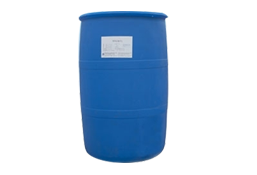The dilute solution of surfactant obeys the law of ideal solution. The adsorption capacity of surfactant on the surface of solution increases with the increase of solution concentration. When the concentration reaches or exceeds a certain value, the adsorption capacity does not increase. These excessive surfactant molecules are disordered or exist in a regular way in the solution. Both practice and theory show that they form a complex in solution, which is called micelle.

In the remediation of contaminated soil, microbial remediation technology has the advantages of non-destructive, economic and safety compared with physical and chemical remediation. It has become one of the promising remediation technologies for polluted environment.
Due to the hydrophobicity of organic pollutants and the fact that pollutants may be strongly adsorbed on the surface of soil particles or enter into soil pores, the concentration of pollutants in aqueous solution is reduced, resulting in the isolation of microorganisms and pollutants. Because microorganisms can't utilize the pollutants with very low concentration, the microbial degradation of pollutants stops or slows down. Therefore, the low water solubility of organic pollutants is the decisive factor in bioremediation, which limits its bioavailability.
The surface viscosity is closely related to the firmness of the surface film. Because the membrane has surface pressure and viscosity, it must be elastic. The higher the surface pressure and viscosity of the adsorption membrane, the greater the elastic modulus. The elastic modulus of surface adsorption film is of great significance in the process of foam stabilization.
Surfactant is one of the main components of detergent decontamination formula. Except for special uses, these products are directly or discharged into the environment after being treated by sewage treatment plant. However, anionic surfactants, which are difficult to be biodegraded, play a major role in detergents. The large amount of wastewater containing surfactant not only directly harms the aquatic environment, kills the microorganisms in the environment and inhibits the degradation of other toxic substances, but also reduces the dissolved oxygen in the water, especially the surfactant containing nitrogen and phosphorus will cause eutrophication. When the concentration of surfactant in sewage reaches a certain level, it will affect many processes such as aeration, sedimentation, sludge nitrification and so on.